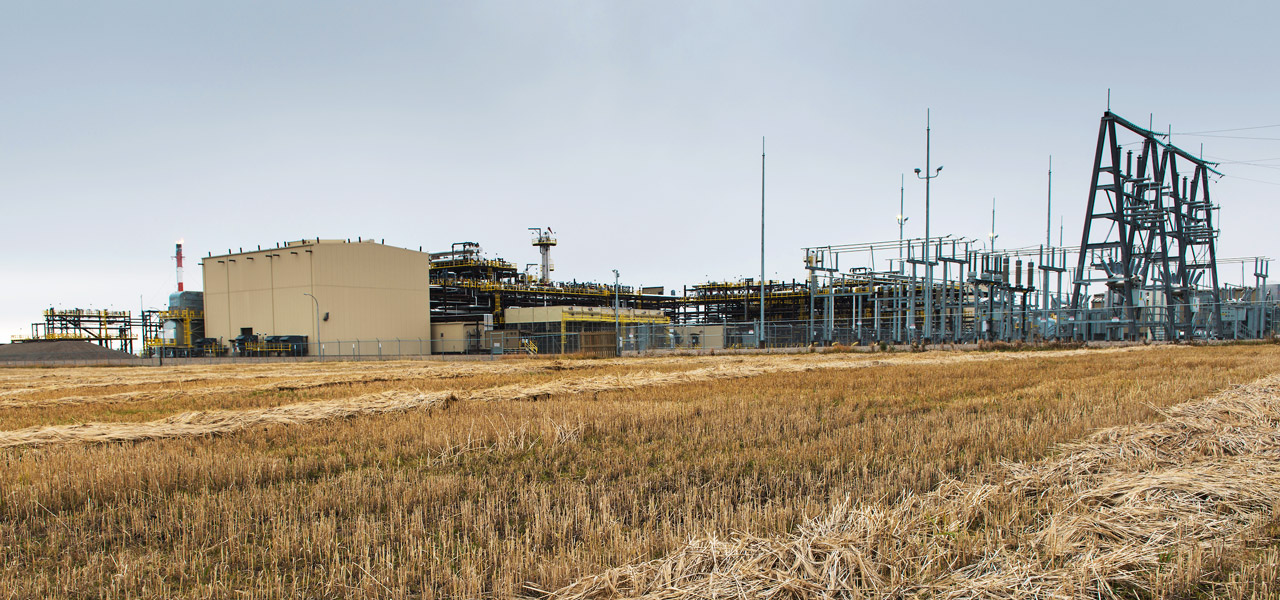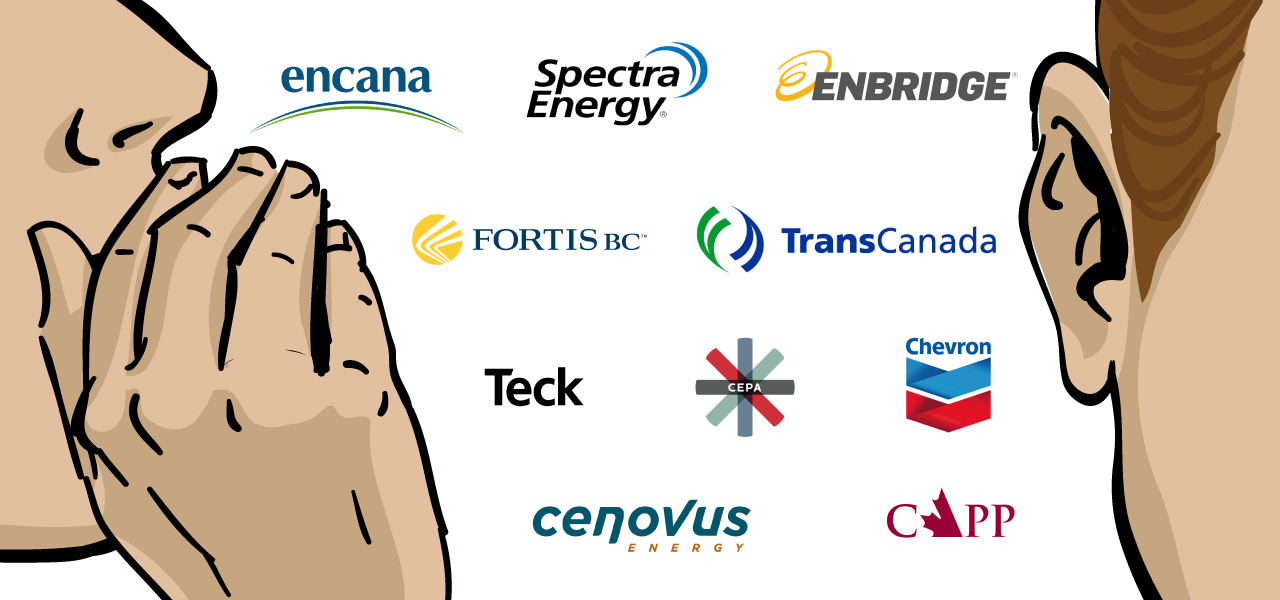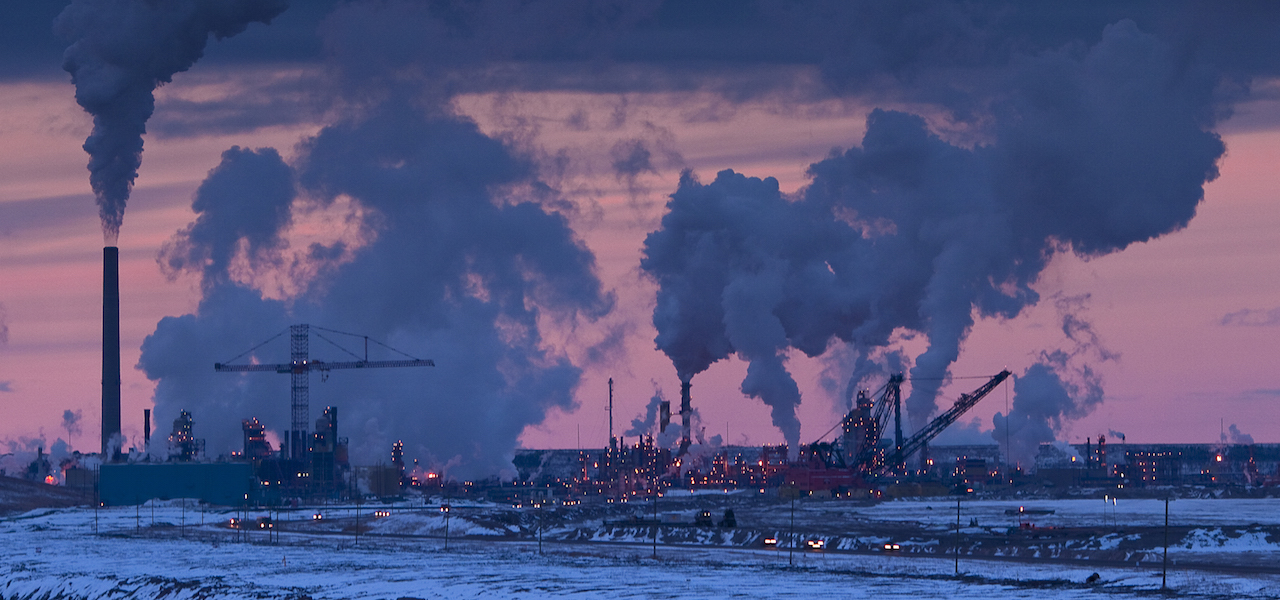How clean is a BC that subsidizes accelerated fossil fuel extraction?
When the provincial government unveiled its new climate plan late last year, Environment Minister George Heyman, Green Party leader Andrew Weaver and Premier John Horgan presented a happy, united front as ceremonies got underway at Vancouver’s main library.
But the biggest smiles of the day may have been on the faces of senior executives at BC Hydro’s headquarters just a few blocks away, and on those of oil and gas company executives in distant Calgary.
That’s because the CleanBC plan accepts as a given a massive new liquefied natural gas (LNG) plant in Kitimat, as well as a 700-kilometre-long gas pipeline linking that plant to northeast BC, where gas drilling and fracking operations are already through the roof and poised to soar higher.
To square the circle of cuts to greenhouse gas emissions alongside a massive ramp-up in fossil fuel output, the government has made it a priority to get fossil fuel companies to use more “clean” electricity as they increase their gas production.
In a nutshell, the government wants fossil fuel companies to stop burning natural gas to power their facilities and to switch to hydroelectric power sources wherever possible. And it’s prepared to grease the wheels of that transition by offering the industry hundreds of millions of dollars in public subsidies.
If the plan works, it may save nominally on emissions from the fossil fuel sector within the province, but it will do nothing to reduce global emissions. That’s because whatever natural gas is conserved by electrifying operations here will be piped for burning somewhere else. Right now, that “somewhere else” is other Canadian provinces and US states. If LNG materializes, then emissions from burning BC gas will occur overseas.
In the midst of a climate crisis caused by relentless fossil fuel use, that’s a big problem. In 2017, global natural gas use climbed 3.7 per cent—a jump twice as high as the average annual increase during the previous five years. Meanwhile, global oil consumption crossed the 100 million barrels per day threshold last year. Our elected leaders know these facts.
If the plan works, it may save nominally on emissions from the fossil fuel sector within the province, but it will do nothing to reduce global emissions. In the midst of a climate crisis caused by relentless fossil fuel use, that’s a big problem.
The NDP government and its Green Party partner haven’t said so, but it is now clear that their plan amounts to a subsidy that will cost taxpayers tens of millions of dollars a year. Strip away the green rhetoric and BC’s new climate plan looks a lot like the playbook of previous BC Liberal governments. In addition to what’s in CleanBC, that playbook includes the vastly over-budget $10.7-billion Site C dam. But you wouldn’t know it from reading the CleanBC plan, which scrupulously avoids ever mentioning the controversial project. It also includes hundreds of millions of dollars in new hydro transmission lines built expressly for natural gas companies, and deep discounts to the royalty payments that those companies pay the Province.
Here’s what we know so far based on the scant details in the CleanBC plan itself and new information from the Ministry of Environment and Climate Change and the Ministry of Energy, Mines and Petroleum Resources.
First, fossil fuel companies will receive further breaks on their already generously low royalty payments for electrifying some of the infrastructure needed to gather and move their fracked gas to market. This will happen under the auspices of a “credit” program, introduced with little fanfare in 2016 by the previous government.
A September news release from the Ministry of Energy and Mines stated that the “clean infrastructure royalty credit program” saved oil and gas companies $19.3 million last year alone.
Those savings are part of a vast suite of subsidies that enabled natural gas companies to reduce their royalty payments by $447 million last year, with the most generous subsidies offsetting the costs of drilling deep and horizontal gas wells, and building roads and pipelines. That translates into a staggering loss of funds, as royalties represent the public’s rightful share of the revenues derived from publicly owned resources. What the companies saved, the public lost in terms of fewer funds for schools, hospitals and other public programs.
The CleanBC plan mentions royalties in passing in a callout box two thirds of the way through the 68-page document but offers scant details. However, it does note how one natural gas company, ARC Resources, reduced its methane emissions by replacing some field equipment with “lower emission” or “zero emission” technology.
In response to questions, the Ministry of Energy and Mines said that the government granted ARC and others royalty discounts after they replaced “pneumatic” equipment at a number of remote natural gas well sites. Pneumatic gauges, meters and pumps are powered by the pressure of the produced natural gas itself. As a consequence, methane, a potent greenhouse gas, “bleeds” off into atmosphere.
Pneumatic equipment is found at tens of thousands of gas wells in North America that are not connected to or are distant from electrical grids. The “clean infrastructure” royalty program is designed to financially reward ARC and others for replacing such equipment with solar-powered, and fuel-cell-powered technology.
This will reduce methane releases. But questions deserve to be asked: Why use tax dollars to subsidize such conversions? Can ARC and others simply not afford to install such equipment without the public’s financial help? What if the government simply required (i.e., regulated) that such investments be made?
Fossil fuel companies will receive further breaks on their already generously low royalty payments for electrifying some of the infrastructure needed to gather and move their fracked gas to market.
In neighbouring Alberta, natural gas and oil producer Modern Resources has ripped out the outmoded, greenhouse gas-emitting pneumatics at its well sites. In their place it has installed solar panels and fuel cells at many sites and taken other steps to reduce greenhouse gas emissions, in many cases saving natural gas and gas liquids in the process. The company then sells the conserved gas and liquids, which it’s in the business of doing anyway.
“People think the oil and gas industry is against solar power because it’s a competitor. We’re the early adopters,” Chris Slubicki, the company’s CEO boasted during a videotaped presentation in Alberta last year. “It’s unbelievable how the performance of solar panels [has gone up] and the costs have dropped. It’s been revolutionary just in the last five years.”
Later in the same presentation, Slubicki noted how the industry in Alberta faces regulations to reduce methane emissions. But the regulations are of no concern to him.
“At Modern, I can guarantee you, we’re not going to meet that requirement because we’re already at zero.”
Another way that ARC Resources has benefitted handsomely from the public purse is through the “carbon neutral government program.” Brought in when Gordon Campbell was premier, the program requires all government offices to be carbon neutral. To reach neutrality, the government uses public funds to buy “carbon credits” so that it can “offset” its own greenhouse gas emissions.
In the past two years alone, ARC received more than $1.2 million in taxpayer dollars for “offsets” it sold to the Province after building a new gas-processing plant near Dawson Creek. Rather than using natural gas to power the plant, the company took advantage of new hydroelectric transmission lines in the region to install equipment on site that took the electricity and used it to power the plant. The alleged savings in “avoided” greenhouse gas emissions then became credits—which, as noted, could otherwise go to schools and hospitals.
ARC Resources is not alone in electrifying its gas processing plants. Three of the largest such plants in western North America were built by Encana on farmlands near the ARC plant. The Encana and ARC plants were all connected to the region’s newly expanded hydroelectric grid, which linked to BC Hydro’s nearby WAC Bennett and Peace Canyon dams.
Ironically, one of the chief outputs from the plants is condensate, an essential additive used by Alberta oil sands producers to dilute unrefined bitumen so that it can more easily be piped to distant refineries on the US Gulf coast. If the Trans Mountain pipeline is eventually built, condensate from BC would assist in moving Alberta’s bitumen to the west coast.
The transmission line that now electrifies the ARC and Encana plants is the recently built Dawson Creek/Chetwynd Area Transmission line or DCAT. BC Hydro told the utilities regulator, the BC Utilities Commission, that DCAT was needed because companies including Encana, ARC, Shell and Murphy Oil were drilling and fracking more wells. Without access to the electrical grid, BC Hydro said, the companies would burn more natural gas to fire compressors at their processing plants.
BC Hydro customers are on the hook to pay for the DCAT through higher electricity rates. And as fracking intensifies, plans are underway to build an equally pricey new transmission line known as the PRES.
In January 2016, then-Premier Christy Clark said the DCAT line was all about “powering jobs for British Columbians” by meeting the needs of the natural gas industry. “Before, industrial customers had to burn gas to power their facilities. The new transmission line not only makes more projects possible, it means they’ll be even cleaner,” Clark said.
BC Hydro customers are now on the hook to pay for the DCAT through higher electricity rates, even though the fossil fuel industry’s need for power was repeatedly given as the primary reason for building the line. The cost of that bill, according to BC Hydro’s most recent filing with the BC Utilities Commission, is $300 million.
Consider that bill a down payment. As fracking intensifies, plans are underway to build an equally pricey new transmission line known as the Peace Region Electricity Supply or PRES.
Preliminary work on PRES is slated for this year. The project will see two parallel 230 kilovolt lines built from a new substation to be located near where Site C is under construction to the heavily drilled and fracked Groundbirch area, some 30 kilometres east of Chetwynd.
As with the DCAT line, BC Hydro’s stated reason for building the line is to “provide electricity to our industrial customers who want to power their facilities with clean energy.”
The previous government removed PRES from scrutiny by the BC Utilities Commission (unlike DCAT, which was subject to review by the Commission). The previous government also exempted a third proposed power line—to be built by a private company to carry electricity north of the Peace River from BC Hydro’s Peace River dams to where LNG proponent, Petronas, has its drilling and fracking operations—from such review.
The current government, which was sharply critical of its predecessor’s energy policies—including its commitments to build Site C and various transmission line projects—is now carrying on where the other left off.
“This is economic madness, and a rejection of everything that the NDP had proposed prior to forming government to reverse the Christy Clark policies in this area,” says Marc Eliesen, a former president and CEO of BC Hydro.
In the summer of 2017, Eliesen warned that a steep price would be paid if the Site C dam project went ahead, and that BC Hydro and the government appeared intent on using gas industry demand for power as a justification for proceeding with the most expensive publicly funded infrastructure project in the province’s history.
The current government, which was sharply critical of its predecessor’s energy policies—including its commitments to build Site C and various transmission line projects—is now carrying on where the other left off.
“There are a number of actions which the former BC government and BC Hydro have engaged in to promote electricity usage in order to justify Site C that are either unrealistic in their expectations or represent a subsidy to industry that will be borne in rates paid by residential users,” Eliesen warned in a scathing report to the Utilities Commission in August 2017.
Chief among those actions was promoting transmission lines to drive demand for electricity in the natural gas sector and then laying the financial burden of paying for those lines largely at the feet of residential BC Hydro customers, Eliesen said.
As construction continues at Site C and as plans get underway to build the PRES line, here’s what BC Hydro says about the growing need for electricity in the fracking fields of northeast BC.
In response to questions filed by the BC Office of the Canadian Centre for Policy Alternatives, BC Hydro says that as a result of historic and more recent transmission line expansions in the region “more than 250 megawatts” of electricity is now being supplied to the region’s natural gas companies, with 200 megawatts of that usage occurring in the last five years alone.
“We project further demand from the natural gas industry with a potential load growth of more than 500 megawatts,” BC Hydro said in an email to the CCPA. “This is based on potential projects customers have approached us about. That’s why we’re proceeding with the Peace Regional Electricity Supply (PRES) project.”
BC Hydro went on to say that the $285-million PRES project “will also help reduce greenhouse gas emissions by facilitating industries and businesses in using clean electricity rather than fossil fuels to power their equipment and operations.”
BC Hydro later clarified that its projected increases in demand for power by the gas industry were for “upstream” facilities only, and did not include estimates on how much power may be needed for “downstream” LNG facilities, such as the (now approved) LNG Canada project in Kitimat.
All of this appears to suggest there is a pressing need for more power, when in fact revised baseline projections of electricity demand in the province show that in the absence of Site C BC Hydro will have an electricity surplus until at least the early 2030s. If even “more aggressive” conservation and climate change actions were taken, the CCPA and others have pointed out, that date could easily be pushed back further still.
As Eliesen and other critics of Site C have noted time and again, BC Hydro has “consistently overestimated” future power demands to justify massive investments in the dam and related transmission lines.
As Eliesen and other critics of Site C have noted time and again, BC Hydro has “consistently overestimated” future power demands to justify massive investments in the dam and related transmission lines.
Overall, energy demand in the province has been flat for the past decade and has actually fallen among major power users such as the mechanical pulp industry, with prospects for such demand in that sector falling further still.
Eliesen also notes that the argument that a rising population translates into increased power needs and therefore the need to build Site C simply does not hold up to scrutiny. As BC’s population climbed over the past decade energy efficiency increased in lock-step, resulting in reduced overall demand. This, coupled with active “demand management” campaigns such as BC Hydro’s Power Smart program, actually helped to drive overall power usage down. There is every reason to believe that further energy efficiencies can be achieved.
In a “deliberate attempt to drive demand” for electricity, BC Hydro and successive provincial governments ignore such conservation gains, “over-exaggerate” projected new demands for power, and “actively engage” in subsidizing one industry to generate a perception that massive amounts of new power are needed, Eliesen told the Utilities Commission in 2017.
The CleanBC plan sidesteps such inconvenient truths. Instead, the government elects to keep the subsidy taps wide open while promoting more fossil fuel extraction and LNG production. Worse, that production will enjoy one other subsidy. It will be exempt from future carbon tax increases.
Meanwhile, BC Hydro ratepayers specifically and taxpayers more generally will be left to pay the bill for electrifying an industry that is already producing more hydrocarbons than at any point in history and is poised to produce a whole lot more.
There’s very little clean about that.
Topics: Climate change & energy policy, Environment, resources & sustainability, Features, Fracking & LNG, Transparency & accountability







